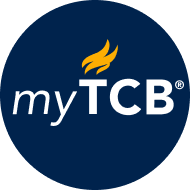


Members of The Conference Board get exclusive access to the full range of products and services that deliver Trusted Insights for What's Ahead ® including webcasts, publications, data and analysis, plus discounts to conferences and events.
25 October 2018 / Report
Due to fast-changing business environments, organizations see increased need for an agile and flexible workforce that includes nontraditional workers. At the same time that demand for nontraditional workers is high, the labor market is tightening, and such workers may not be widely available. It is critical that CHROs focus on nontraditional workers—identifying them, recruiting them, engaging and retaining them—as they do with traditional employees in their workforce. This report examines how organizations are leveraging nontraditional work arrangements to meet business demands as well as approaches to attracting and engaging them. It includes a survey of business executives leading initiatives around nontraditional workers.
Due to fast-changing business environments, organizations see increased need for an agile and flexible workforce that includes nontraditional workers. At the same time that demand for nontraditional workers is high, the labor market is tightening, and such workers may not be widely available. It is critical that CHROs focus on nontraditional workers—identifying them, recruiting them, engaging and retaining them—as they do with traditional employees in their workforce. This report examines how organizations are leveraging nontraditional work arrangements to meet business demands as well as approaches to attracting and engaging them. It includes a survey of business executives leading initiatives around nontraditional workers.
CHROs and human capital executives struggle to meet the demand for the skills their business requires. This struggle is exacerbated by current labor shortages, rapidly changing technologies, and a constant need to manage costs. Given the complexities of a fast-changing business environment, CHROs and human capital (HC) executives are seeing increased need for agile and flexible workforce planning and management capabilities and deploying nontraditional workers in their organizations. Less than half of CHROs believe their future workforce will be comprised of traditional, full-time employees.1 Our study also showed high percentages of CHROs who predict their nontraditional workforce will grow and the use of partners for nontraditional workers will grow.
It is critical that CHROs focus on nontraditional workers—identifying them, recruiting them, engaging and retaining them—as they d
Head of Career Strategy and Experiences
Arch Insurance Group

myTCB® Members get exclusive access to webcasts, publications, data and analysis, plus discounts to events.
You already have an account with The Conference Board.
Please try to login in with your email or click here if you have forgotten your password.

To build a skills-based talent strategy, start small and scale smartly
November 21, 2025

To build resilience, deepen HR and corporate citizenship integration
November 14, 2025

To boost engagement, elevate the informal moments that matter
November 07, 2025

HC Insights: To unlock hybrid’s potential, ensure fairness by design
September 26, 2025

